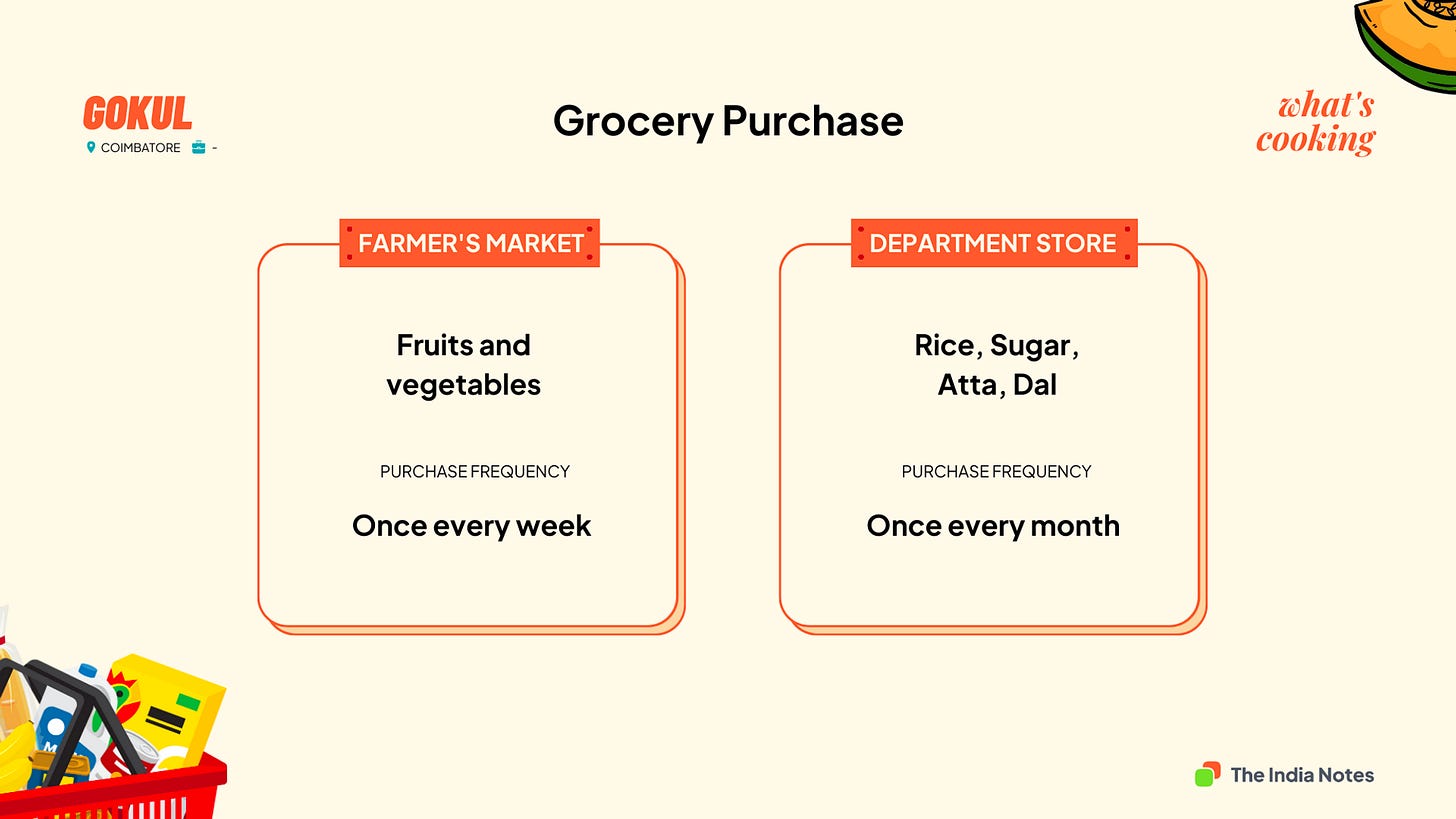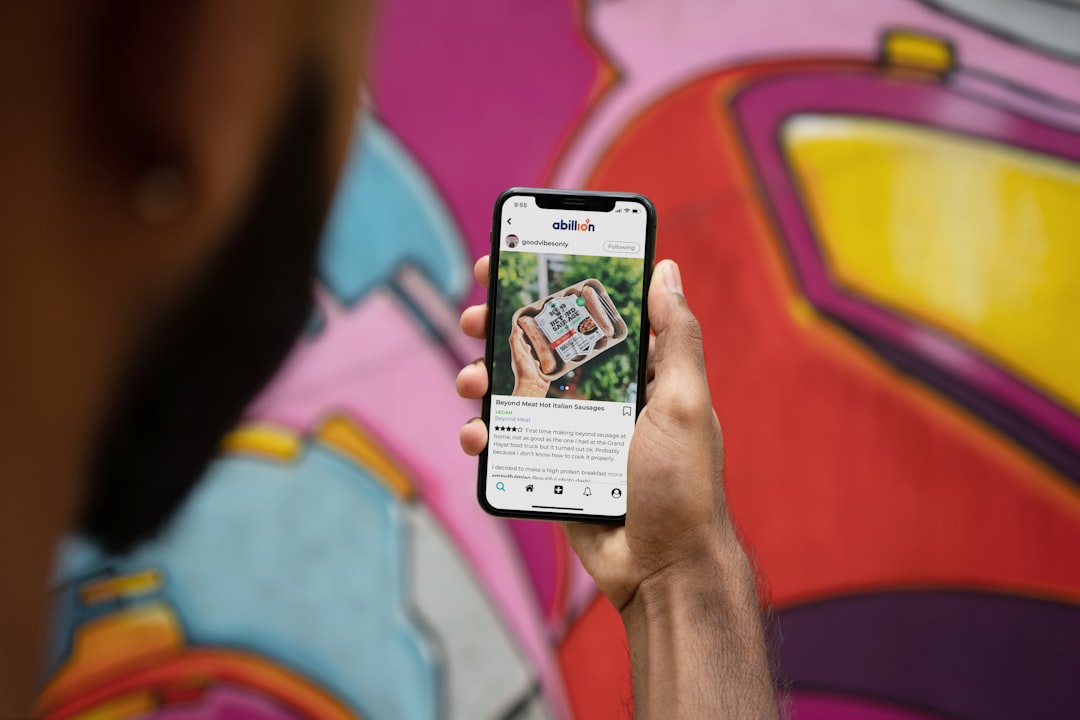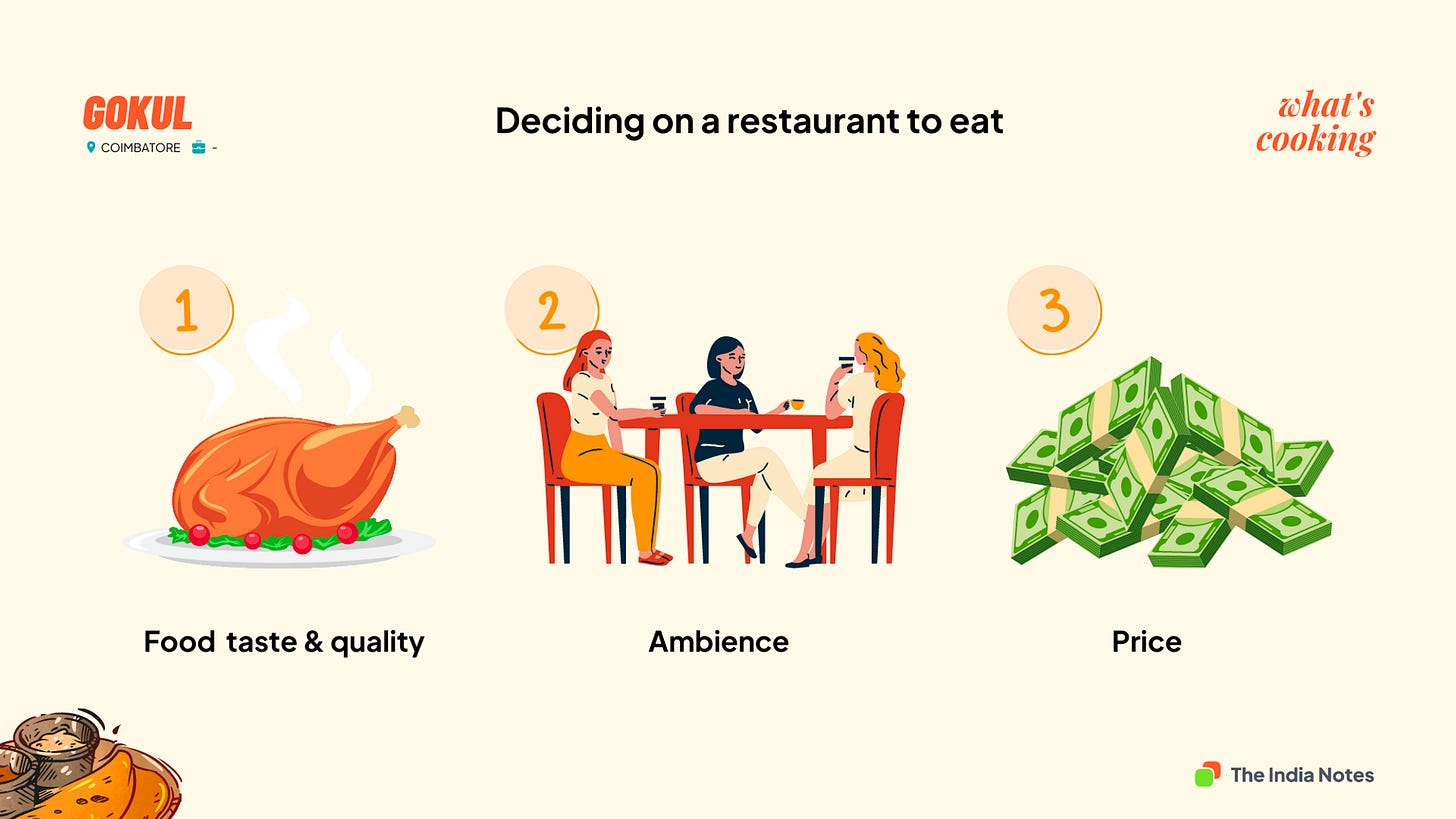#11 | Gokul - Paid reviews create mistrust in influencers
What's cooking - Qualitative study to understand food in urban households
As a child, the mouth-watering smell of freshly baked bread in the evening would draw us to the local bakery. We delighted in the delicious masala buns. The digital world has replaced discovery based on the aroma with reviews, ratings and influencer marketing. We've come full circle. However - it's now tricky to determine if we're being influenced or deceived.
About the research: 'What's Cooking?' is a user research series aimed at understanding how urban millennial households consume food. All the names and personally identifiable information are masked to honour the participants' privacy. I publish one story from this series every Thursday.
Gokul has been residing in an independent house in Coimbatore with his parents for the past twenty years. Gokul works as a designer remotely for a Bangalore company and occasionally visits the office when the company asks. His father takes care of the business, and his mother is a homemaker who handles the kitchen at home.
Food preferences
Gokul’s dad had turned vegetarian as he feels allergic to eating meat. His mom stopped consuming meat after her marriage. Gokul is the only non-vegetarian in the household, yet his mother prepares non-vegetarian food for him despite not eating it herself. The family mainly eats south Indian vegetarian dishes, including breakfast and lunch prepared at home. On weekdays, they order non-vegetarian food for Gokul 3-4 times a month.
Gokul has been attending the gym regularly for the past year, consuming protein-rich foods like sprouts and peanuts for breakfast and snacks. On the weekends, the family usually skips breakfast and opts for a healthy drink or fruit before having lunch.
The two-decade relationship with a grocery store.
Gokul’s mom decides on the everyday cooking menu and makes grocery purchases. She asks Gokul if he wants non-vegetarian food only on weekends.
Gokul’s dad buys vegetables and fruits from the nearby Uzhavar Santhai (Farmer’s market)once a week. Other groceries are bought from a department store near their house once a month.
They have been buying from the same department store for 15-20 years. It’s a medium-sized supermarket where you can get most household items.
Even when something runs out of stock, we immediately go to the store and get it. So it's never been an issue. The interesting thing about my area is that it’s one big residential plus a commercial area. So there are many stores and at least any of them would be having stock. We can always get whatever we need at any point in time.
Gokul prefers ordering even smaller items like a bag of chips or chocolate online either via BigBasket.
Let's say like a pack of chips or like basically something which doesn't justify the effort of going outside and buying it. Like one or two items, not more than 150 rupees in price. So these things I try to order it from online and get it delivered.
During the Covid lockdown, Gokul wanted to order groceries online through BigBasket, but due to a high number of orders, the app had a token system with a 10-day wait time. Unsatisfied, the family went back to buying groceries in person.
The favourite family restaurant
There are days when Gokul’s mom is tired by evening to prepare a full-course dinner, and the family resorts to ordering online.
They often dine at Annapurna, a vegetarian-only restaurant chain that has been present in the town for decades, to satisfy all diners' dietary preferences.
Gokul orders North Indian cuisine from the same restaurant and extra to let his parents try something different from their usual South Indian favourites like idly and dosa.
So my mom and dad order the same items and typically rotate between Roast, Uttapam, Idli, Sambhar Idli, and Paniyaram. I try to experiment and order different things like Paratha, Roti, and Rumali Roti, and all the North Indian Gravies like Paneer Butter Masala etc. And whenever I order something new, I order one extra portion and then I give it to my parents. I ask them to share it because they won't order it for themselves. They eat it only when I order for myself and then give it to them.
Paid reviews create mistrust in influencers.
Instagram and Twitter are the only two social networks that Gokul uses on a daily basis. He leverages his local Instagram network to find new restaurants, relying mainly on friends' recommendations.
Gokul and his friends were let down when they trusted an influencer's restaurant recommendation, resulting in Gokul losing faith in bloggers and influencers.
After seeing a lot of paid reviews; I don't really trust reviews, and blogs anymore, be it YouTube or Instagram. Because recently we went to a restaurant depending on the reviewer, but we didn't actually find it good. But in the review, the reviewer would praise the restaurant for everything, but it wasn't really good at all. Then you understand that it must have been paid review and so on.
Ratings aren’t crucial while ordering online.
Gokul is sceptical of food ordering app ratings and relies on friends' and bloggers' suggestions instead. Gokul suspects ratings can be misleading because people often use different apps, resulting in inconsistent ratings.
Some people might be using Zomato and rating it over there. Some people might be using Swiggy and rating it over here. Some people might be actually going to the restaurants, eating it personally, and they're rating it on Google. All these ratings are split between different platforms, and I don't really want to depend on one particular platform. Let's say 10 people go to a restaurant. If eight of them did not like the food, they give their rating on Google. And let’s say the 2 of them rate on Swiggy. Now Swiggy has a 5-star rating, but Google will have a 3-star or 2-star rating. So which would I believe? So that's why I don't depend on that.
When travelling to Bangalore, Gokul uses ratings to find restaurants. If he doesn't have any local connections, he'll turn to reviews from strangers.
Food >> Ambience >> Price
Whenever Gokul goes out to eat with his parents, they only opt for vegetarian restaurants, usually ending up at Annapurna.
When Gokul goes out with friends, he opts for non-veg cuisine. They choose the restaurant based on food quality, atmosphere and cost. He also opts for non-veg dishes if he orders for himself from home.
A restaurant's budget per person can range from Rs.400 (for a mess) to Rs.2,000 - Rs. 3,000 (for a rooftop restaurant or resto-bar).
If you enjoyed this story, do share it with your friends and colleagues!
Follow me on Twitter (@dharmeshba) for updates on Indian consumer behaviour. Thanks to Rajesh Raghavan for co-writing this piece.







Quite a nice read.
On a side note, what disappoints me every time I open a story from this series is the "Kitchen Owner" label always belonging to a woman.